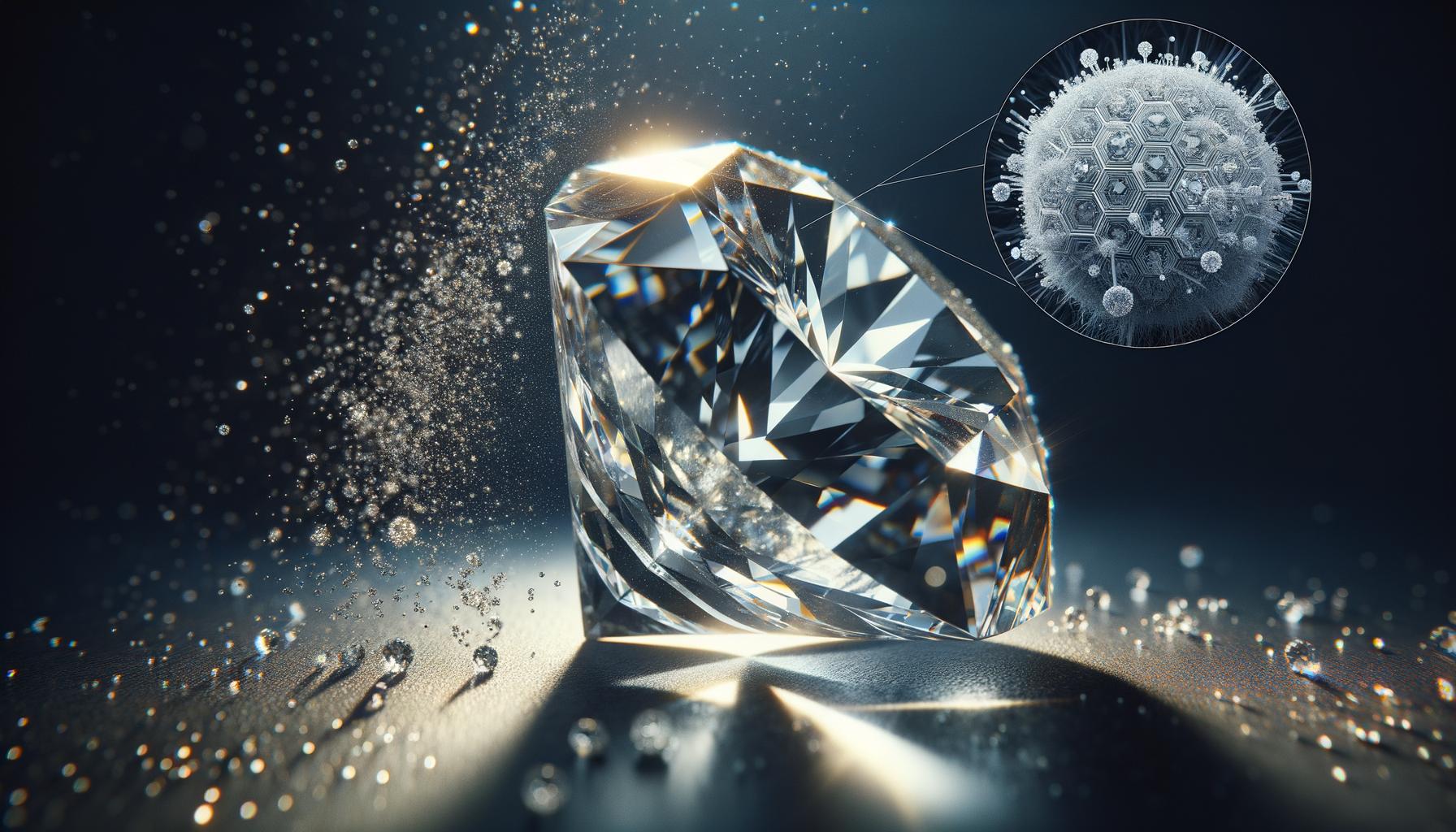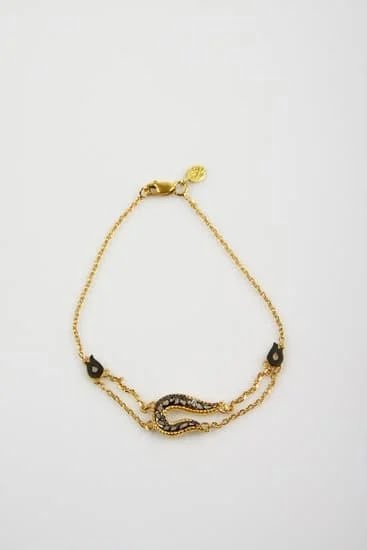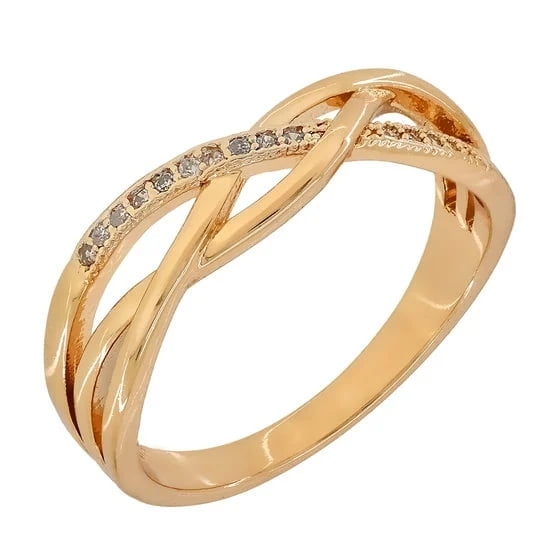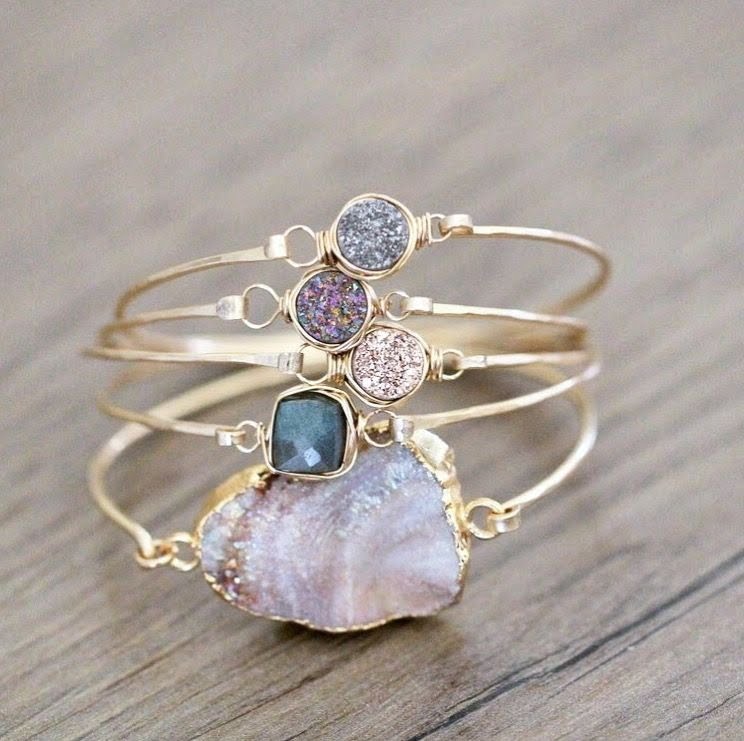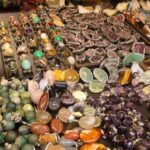The timeless beauty of diamonds: what makes them so special? This question has captivated humans for centuries, drawing admiration and desire across different eras and cultures. Diamonds have not only stood the test of time but also continue to be symbols of enduring beauty, commitment, and status. From ancient civilizations to modern society, these precious stones have always held a special place in both history and hearts.
Diamonds are often considered the epitome of luxury and sophistication, possessing an enchanting aura that is hard to resist. Historically, they were coveted by royalty and aristocrats, adorned in crowns, scepters, and other regalia as emblems of power and prestige. Over the years, this allure has extended beyond the palatial walls to become a cherished treasure for people worldwide. Their timeless appeal is witnessed in how they are embraced for various occasions-especially significant milestones like engagements, weddings, and anniversaries.
Part of what makes diamonds so captivating is their fascinating journey from deep within the Earth’s mantle to glistening showcases in jewelry stores. Formed billions of years ago under extreme temperatures and pressures, each diamond holds a story forged over eons. This lengthy formation process contributes to their rarity and immense value. The combination of historical reverence and natural wonder ensures that diamonds remain unmatched in their splendor and significance through the ages.
The Formation of Diamonds
The formation of diamonds is a fascinating journey that begins deep within the Earth’s mantle, approximately 90 to 120 miles below the surface. Here, under intense heat and pressure, carbon atoms are subjected to conditions so extreme that they crystallize into diamond structures. This process does not happen overnight; it unfolds over an immense timeframe ranging from one to three billion years. The ancient origins of these gemstones contribute significantly to their rarity and intrinsic value.
1. Stages of Diamond Formation:
- High Pressure and Temperature: The transformation of carbon into diamonds requires temperatures exceeding 2000 degrees Fahrenheit and pressures about fifty times greater than what is found on the Earth’s surface.
- Transport to the Surface: Diamonds are brought closer to the Earth’s surface through volcanic eruptions, encased in a type of igneous rock known as kimberlite. These eruptions create diamond-rich pipes which are then mined for commercial use.
The timeless beauty of diamonds: what makes them so special lies partly in this extraordinary creation story-one that stretches back millions of years before humans ever set eyes on them. Each diamond encapsulates a fragment of Earth’s geological history, making them not just exquisite pieces of jewelry but also remarkable natural relics.
Furthermore, it is essential to note that not all carbon under similar conditions will turn into diamonds; a very specific set of circumstances must align for this metamorphosis to occur. This intricate dance between time, pressure, temperature, and geological activity introduces another layer at which diamonds distinguish themselves from other gemstones. Knowing that your dazzling diamond endured such a dramatic journey only enhances its allure and mystique.
The Unique Physical Properties of Diamonds
Diamonds are widely recognized as the hardest natural substance on Earth, a feature that significantly contributes to their timeless beauty and appeal. This unparalleled hardness is due to their unique crystal structure, where each carbon atom forms strong covalent bonds with four other carbon atoms in a tetrahedral arrangement. This not only grants diamonds their extraordinary hardness but also makes them exceptionally durable and resistant to scratching – attributes that allow diamond jewelry to retain its luster and integrity over generations.
In addition to being incredibly hard, diamonds possess remarkable optical properties that set them apart from all other gemstones. Their high refractive index allows them to bend light at severe angles, creating an effect known as “fire,” where white light disperses into a spectrum of colors.
Moreover, the clarity of diamonds – essentially the absence of internal flaws known as inclusions – enhances this effect, making every facet of a diamond sparkle brilliantly under different lighting conditions. The timeless beauty of diamonds: what makes them so special lies largely in this ability to captivate the eye with their unmatched brilliance and dispersion of light.
When selecting a diamond, it’s crucial to understand the importance of the 4Cs: Cut, Color, Clarity, and Carat weight. These criteria are used globally to determine the value and quality of each stone:
- Cut: Refers to how well-proportioned and finely finished a diamond is; it influences how well the stone can interact with light.
- Color: Diamonds come in various shades ranging from colorless (the most valued) to those with hues like yellow or brown; rarer colors can command higher prices.
- Clarity: Evaluates how free the diamond is from internal imperfections or inclusions.
- Carat weight: Measures how heavy a diamond is; although it influences size perception, two diamonds of equal carat can vary significantly in value based on cut quality.
Understanding these aspects ensures that those seeking out diamonds can make informed decisions based on both personal preference and intrinsic value. By mastering knowledge of these physical properties and evaluation criteria, buyers can truly appreciate what makes a diamond such an exceptional gem.
The Symbolism and Cultural Significance of Diamonds
Diamonds have maintained a prominent role in various cultures for centuries, often symbolizing eternal love, strength, and resilience. Ancient Greeks believed that diamonds were the tears of gods or splinters from falling stars, imbuing these precious stones with a divine quality.
The enduring myth that Cupid’s arrows were tipped with diamonds further linked these gems to the concept of romantic love. As symbols of purity and invincibility, diamonds have been treasured by royalty and deified as sacred objects across different civilizations.
Historical Narratives and Their Modern Resonance
The timeless beauty of diamonds: what makes them so special can be traced back to their representation in historical narratives and cultural artifacts. In medieval Europe, diamonds were considered powerful talismans that could provide protection during battles and ward off evil spirits.
Monarchs would often wear them as a testament to their strength and divine right to rule. Today, this rich historical symbolism seamlessly transitions into modern practices where diamonds continue to signify authority and commitment-especially evident in the custom of diamond engagement rings symbolizing everlasting love.
The Role of Diamonds in Literature and Art
Throughout literature and art, diamonds have been utilized metaphorically to convey deep human emotions such as love, greed, envy, or even enlightenment. In Shakespeare’s “A Midsummer Night’s Dream,” the character Oberon refers to a flower hit by Cupid’s arrow turning into a magical potion-highlighting the alluring power associated with diamonds.
Renowned artworks depicting diamond-clad figures underscore their association with wealth and opulence. This recurrence in creative works amplifies the perception of diamonds as not just ornamental gemstones but also potent symbols ladened with meaning.
Modern-Day Appreciation Across Cultures
In contemporary culture, diamonds extend far beyond Western traditions; they hold significance across diverse societies globally. For instance, in Indian culture, different types of diamonds are attributed to bring good fortune depending on one’s astrological sign-a practice deeply embedded in Vedic traditions.
In Asian cultures like China, gifting diamond jewelry is seen as an expression of prosperity and happiness for festivals or milestone celebrations. These cross-cultural adoptions underscore how the intrinsically captivating allure-the timeless beauty of diamonds: what makes them so special-is universally acknowledged.
Thus, while varying in specifics from one region to another, the overarching themes tied to love, status, protection, and eternity remain constant threads making the symbolism of diamonds both historically rich and culturally ubiquitous.
The Timelessness of Diamond Jewelry
An Emblem of Eternal Love
The timeless beauty of diamonds: what makes them so special? One significant reason is their association with eternal love and commitment. Traditionally, diamonds have been the gemstone of choice for engagement rings, symbolizing a love that is both unbreakable and enduring.
Their unparalleled durability and lasting brilliance make them a fitting representation of a bond meant to last forever. Every year, couples around the world choose diamond rings as tokens of their promise to one another, perpetuating a tradition that has endured for centuries.
A Legacy Passed Down Through Generations
Diamonds are not just pieces of jewelry but cherished heirlooms that can be passed down from one generation to another. An inherited diamond bracelet or necklace carries stories, memories, and emotional value that new gems cannot replicate. These heirloom pieces often mark significant family milestones-weddings, anniversaries, graduations-and serve as tangible links to one’s heritage. The perpetual allure and indestructibility of diamonds ensure that they remain beautiful and valuable across generations, making them precious gifts within families.
Modern Trends in Diamond Jewelry
While traditional designs remain popular, contemporary trends in diamond jewelry offer a wide array of styles and settings that cater to modern tastes. From minimalist solitaire rings to intricate vintage-inspired designs adorned with multiple smaller stones, today’s options are vast and varied.
Fashion-forward individuals may opt for stackable diamond bands or personalize their pieces with unique cuts such as pear or heart shapes. Despite evolving styles and preferences, the timeless beauty of diamonds persists at the core of all these creations, making them both classic and current-a rare combination in any fashion accessory.
These elements showcase why diamond jewelry has retained its position as an unparalleled symbol of elegance and continuity through time.
Famous Diamonds and Their Stories
The allure of famous diamonds transcends mere physical appeal, enshrining each stone in history and myth. These remarkable gems stand as testaments to the timeless beauty of diamonds: what makes them so special. One such legendary diamond is the Hope Diamond, famous for its captivating deep blue hue and storied past.
Weighing approximately 45.52 carats, the Hope Diamond is believed to have originated from India and passed through various hands before ending up in the Smithsonian Institution. Known for its supposed curse, this gem has fascinated historians and gem enthusiasts alike with tales of misfortune befalling its owners.
Another diamond that has left an indelible mark on history is the Cullinan Diamond, unearthed in South Africa in 1905. Weighing a staggering 3,106 carats uncut, it remains the largest gem-quality rough diamond ever found.
The Cullinan was eventually cut into several polished gems, including two prominent stones-the Great Star of Africa (Cullinan I) and the Lesser Star of Africa (Cullinan II)-which now form part of the British Crown Jewels housed in the Tower of London. Their unparalleled brilliance and size underscore both their historical value and their contribution to royal regalia.
The Koh-i-Noor Diamond holds a similarly elevated status in global lore. With roots tracing back to ancient India, this diamond’s name means “Mountain of Light” in Persian-a fitting description given its once-impressive size before multiple recuts reduced it to its current weight of 105.6 carats.
Over centuries, this historic gem swapped hands amongst Persian, Mughal, Afghan, Sikh rulers before ultimately becoming part of British crown heritage during colonial rule. Today, it resides within Queen Elizabeth’s ornate crown displayed at London’s Tower-embodying centuries’ worth conflict power struggles intertwined with sparkling legacy.
| Famous Diamonds | Notable Facts |
|---|---|
| Hope Diamond | Deep blue hue; weighs 45.52 carats; associated with a legend of curse |
| Cullinan Diamond | Originally weighed 3,106 carats uncut; part of British Crown Jewels |
| Koh-i-Noor Diamond | Name means “Mountain of Light”; now weighs 105.6 carats; historical significance across various empires |
The Ethical and Sustainable Choice
Lab-grown diamonds have made significant strides in both technology and consumer acceptance, emerging as an ethical and sustainable alternative to traditional mined diamonds. Although they share the same chemical composition and physical properties as natural diamonds, lab-grown diamonds are created using cutting-edge technological processes that replicate the high-pressure, high-temperature conditions of the Earth’s mantle.
These methods produce gems that are virtually indistinguishable from their natural counterparts, even to skilled gemologists. The advancement of this technology plays a crucial role in reducing the environmental impact associated with conventional diamond mining.
One of the most attractive aspects of lab-grown diamonds is their reduced environmental footprint. Traditional diamond mining can be ecologically destructive, involving significant disruptions to landscapes and ecosystems, water consumption, and carbon emissions. Conversely, lab-grown diamonds typically require less energy and produce fewer carbon emissions compared to mined diamonds.
This aspect is particularly appealing to environmentally conscious consumers who value sustainability without compromising on quality or aesthetics. Moreover, the ethical benefits extend beyond environmental issues; purchasing lab-grown diamonds eliminates concerns related to exploitative labor practices often associated with diamond mining in conflict zones.
From an aesthetic standpoint, lab-grown diamonds exhibit the same timeless beauty as naturally occurring ones-sparkling brilliance, exceptional clarity, and enduring value. This striking similarity makes them increasingly popular among modern consumers who seek ethically sourced gemstones without sacrificing luxury or elegance.
The lower cost of production for lab-grown diamonds also translates into better value for buyers: these stones generally come at a more affordable price point than mined diamonds of comparable size and quality. Thus, individuals looking to own or gift a piece of iconic jewelry can do so knowing they are making a responsible choice.
| Aspect | Comparison |
|---|---|
| Environmental Impact | Lab-grown diamonds typically require less energy and cause fewer disturbances to landscapes compared to traditional diamond mining. |
| Cost | Lab-grown diamonds tend to be more affordable than mined diamonds of similar quality. |
| Aesthetics | Both lab-grown and natural diamonds exhibit comparable brilliance, clarity, and light dispersion. |
The timeless beauty of diamonds: what makes them so special extends not only through their appearance but also their evolving story in our modern era-a narrative enriched by advancements like lab-grown options that align splendor with sustainability.
Choosing the Perfect Diamond
When stepping into the world of diamonds, one quickly realizes that selecting the perfect stone involves a keen understanding of various crucial factors. The 4Cs-Cut, Color, Clarity, and Carat Weight-serve as fundamental guidelines in determining a diamond’s overall quality and value.
The cut, perhaps the most pivotal among these, directly influences how well a diamond reflects light, thereby affecting its brilliance and sparkle. A well-cut diamond will dazzle radiantly regardless of its other characteristics, making it worth every bit of your investment.
Another vital consideration is the certification of the diamond you are planning to purchase. Certified diamonds come with documentation from reputable gemological laboratories such as GIA (Gemological Institute of America) or AGS (American Gem Society), ensuring their authenticity and providing a precise assessment of their 4Cs. This certification not only verifies the quality but also gives buyers confidence in their purchase by outlining any features that can impact value, like minor inclusions or color variances.
Customization options add another layer to choosing your perfect gemstone. Whether you’re opting for a traditional solitaire engagement ring or a bespoke piece designed to reflect personal tastes and styles, many jewelries offer extensive customization services. Engaging with seasoned professionals can guide you through options like selecting settings or combining different gemstone accents to complement the chosen diamond. Consequently, this personalized touch transforms a mere purchase into an emotionally enriched experience marked by individuality.
Indeed, embarking on this journey reveals why buyers remain enamored with diamonds across generations-the meticulous selection process accentuates their significance further cementing the timeless beauty of diamonds: what makes them so special lies not only in their innate qualities but also in how thoughtfully they are chosen and cherished by individuals worldwide.
Caring for Your Diamonds
In addition to at-home care, professional cleaning and inspections are highly recommended. Jewelers have specialized equipment that can thoroughly clean your jewelry while also checking for any signs of wear and tear, such as loose fittings or prongs.
Scheduling a professional cleaning and inspection at least once a year not only keeps your diamonds looking their best but also helps identify any potential issues before they lead to more significant problems, thus preserving the timeless beauty of diamonds: what makes them so special.
Proper storage is another vital aspect of diamond care. Diamonds should be stored individually in soft cloth pouches or separate compartments within a jewelry box to prevent them from scratching other pieces or being scratched themselves. Furthermore, it’s wise to keep them away from extreme temperatures and humidity which can cause metals to tarnish and affect gemstones’ integrity over time.
Lastly, considering insurance for your diamond jewelry offers peace of mind against loss, theft, or damage. Many insurers provide policies specifically designed for valuable items like diamonds with coverage that includes repair costs if they get damaged. By taking these steps-routine cleaning, professional inspections, careful storage, and securing appropriate insurance-you ensure that your diamonds retain their exceptional brilliance and continue to be cherished symbols of elegance and significance across generations.
Conclusion
In reflecting on the extraordinary journey that diamonds take from deep within the Earth’s mantle to cherished symbols of human connection, it becomes clear why these gems have maintained their esteemed status throughout history. The remarkable formation process, which spans billions of years, endows each diamond with a sense of rarity and preciousness that is unmatched by any other material. Their unique physical properties, such as unmatched hardness and unparalleled brilliance, further reinforce their mystique and desirability.
The timeless beauty of diamonds: what makes them so special? This question can be appreciated through their symbolic significance across different cultures and eras. From representing eternal love in engagement rings to their status as heirlooms passed down through generations, diamonds encapsulate emotions and milestones that transcend time. Modern trends continue to celebrate this long-standing admiration, blending classic designs with contemporary styles to create jewelry pieces that remain relevant and enchanting for future generations.
As we delve into the ethical considerations surrounding diamond sourcing, including the rise of lab-grown alternatives, it is evident that our approach to these stunning gems evolves with societal values. Nonetheless, whether naturally formed or ethically cultivated in a lab, diamonds retain their emblematic charm and continue to offer beauty without compromise.
In summarizing the attributes that make diamonds so captivating-their historical significance, exceptional physical characteristics, emotional weight, and eternal appeal-they indeed prove themselves as more than mere stones but perennial treasures worthy of admiration.
In embracing the allure and value of diamonds for either personal adornment or as special gifts for loved ones, we participate in an age-old tradition celebrated across various facets of human culture. By choosing responsibly sourced diamonds or engaging with modern innovations like lab-grown options, we ensure that we honor both our planet’s wellbeing and the everlasting charm these magnificent stones possess.
Frequently Asked Questions
What Makes Diamonds So Special?
Diamonds are considered special due to their remarkable physical properties, including their unrivaled hardness and exceptional light dispersion, which gives them a captivating sparkle. Their formation process, taking billions of years deep within the earth under extreme pressure and temperature, adds to their rarity and allure.
Furthermore, societal perceptions play a significant role in elevating diamonds’ status, often symbolizing wealth, elegance, and eternal love. These factors combined create an aura of exclusivity and desirability around diamonds.
Why Are Diamonds Timeless?
Diamonds are timeless because they embody traits that are universally and perpetually admired—indestructibility combined with brilliance. The phrase “a diamond is forever” underscores not only the gemstone’s physical durability but also its enduring emotional significance in human relationships, particularly when used in engagement rings or heirlooms passed down through generations.
Cultural practices and traditions maintain their iconic status across time periods and societies, ensuring that diamonds remain a cherished object of beauty and value.
What Is the Beauty of Diamonds?
The beauty of diamonds lies in their ability to refract light in such a way that produces a mesmerizing array of colors known as “fire.” Their clarity allows for maximum brilliance, capturing the essence of light itself within a carefully crafted cut.
A diamond’s aesthetic appeal is further enhanced by its facets—precisely cut surfaces that interact intricately with ambient light to create sparkle unparalleled by any other gemstone. This combination of optical performance and elegant simplicity renders diamonds extraordinarily beautiful to behold.

Welcome to my jewelry blog! My name is Sarah and I am the owner of this blog.
I love making jewelry and sharing my creations with others.
So whether you’re someone who loves wearing jewelry yourself or simply enjoys learning about it, be sure to check out my blog for insightful posts on everything related to this exciting topic!

